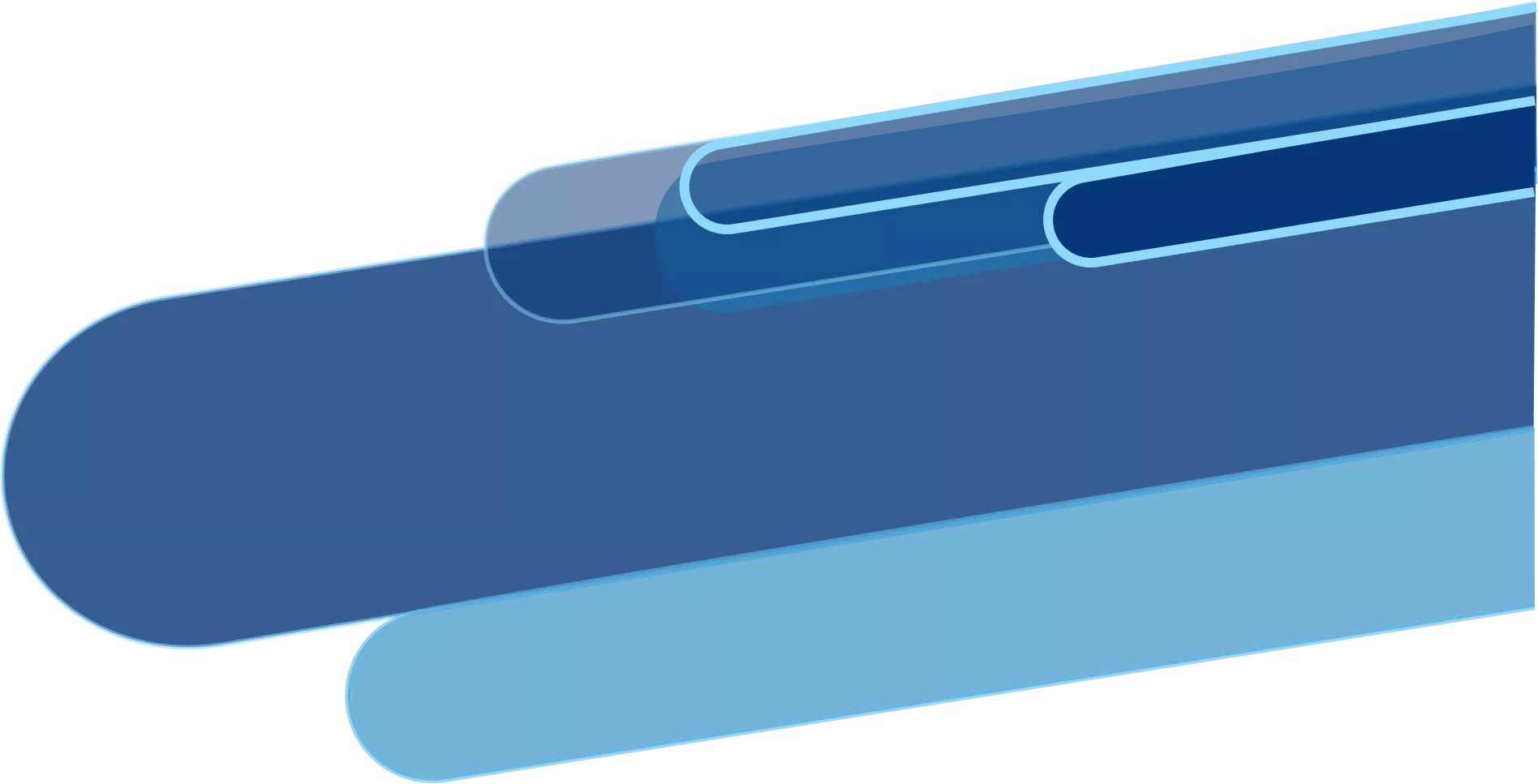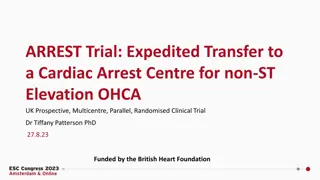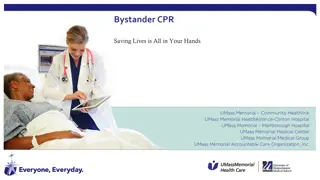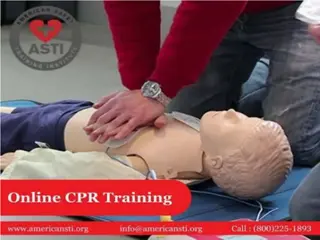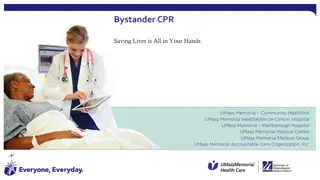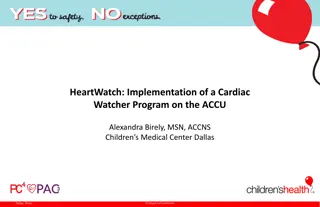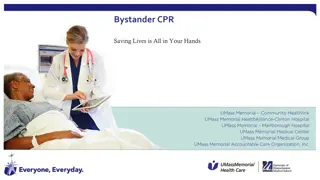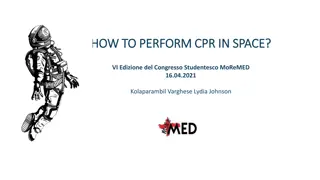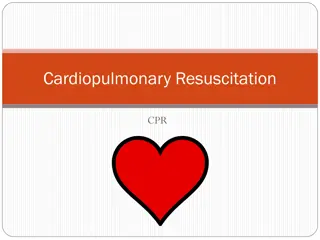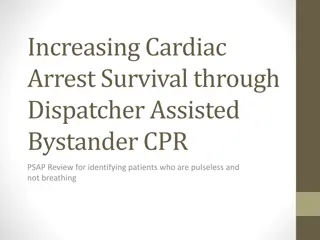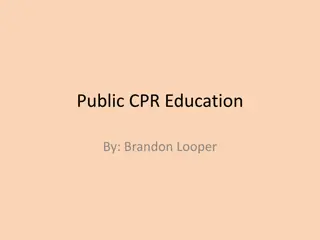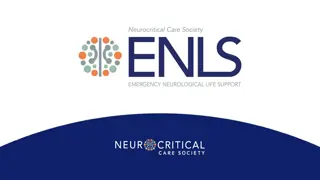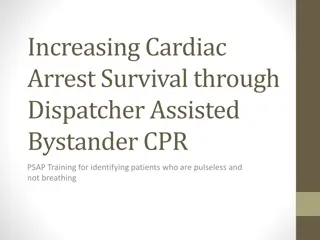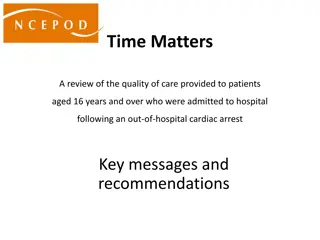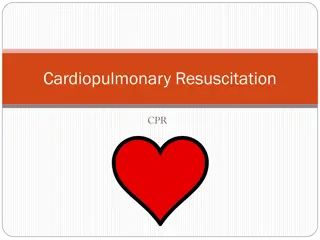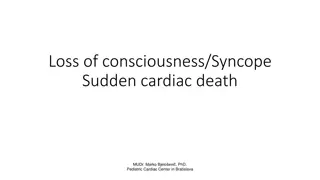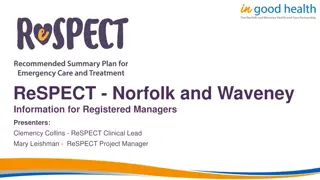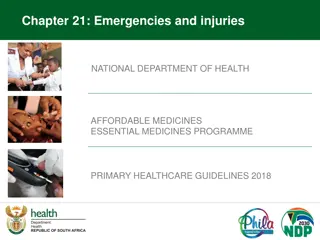Importance of CPR in Cardiac Arrest Emergencies
CPR is crucial in cardiac arrest situations as it can prevent brain damage and increase the chance of survival. Knowing how to check for responsiveness and perform CPR correctly on adults, children, and infants can make a difference in saving a life. Immediate action within the first few minutes is vital to increase the chances of successful resuscitation.
Download Presentation

Please find below an Image/Link to download the presentation.
The content on the website is provided AS IS for your information and personal use only. It may not be sold, licensed, or shared on other websites without obtaining consent from the author.If you encounter any issues during the download, it is possible that the publisher has removed the file from their server.
You are allowed to download the files provided on this website for personal or commercial use, subject to the condition that they are used lawfully. All files are the property of their respective owners.
The content on the website is provided AS IS for your information and personal use only. It may not be sold, licensed, or shared on other websites without obtaining consent from the author.
E N D
Presentation Transcript
Dont be Another Statistic~ Cardiac Arrest is rapidly becoming the leading cause of death in America. Once the heart stops its function, the brain may survive without oxygen for up to 4 min. Unfortunately, EMS may take 6,8, or even 10 min. Depending on your location. CARDIO (heart) PULMONARY (lungs) CPR Timeline: CPR Timeline: RESUSCITATION (revive) 0-4 min. brain damage unlikely 4-6 min. brain damage possible 6-10 min. brain damage probable Over 10 min. probable brain death *Artificial heartbeat
Why Important? CPR may not SAVE the victim, but if started within 4 minutes of cardiac arrest & defibrillation is provided within 10 minutes, a person has a 40% 40% chance of survival.
How to check for responsiveness? Adult/Child: Tap and shout, Are you ok ? Infants: Tap feet and gently tap chest or shoulders. If there is NO response, call 911 IMMEDIATELY IMMEDIATELY and check the victim for circulation.
Where to check for a pulse? Why do you think we need to check a different pulse from an infant than a child? CAROTID -Adult BRACHIAL-baby RADIAL- Child
ABCs Airway: Tilt head and life chin, open the airway and listen and feel for breaths. Breathing: Feel any breaths against your ear and look towards their toes to see if their chest is rising and falling. Circulation: Check for a pulse.
Infant CPR Age Range: NB-12months Same as Adult Hand Placement: One hand on forehead, other hand compress using two fingers. How deep: 1/3 infants depth of chest
Child CPR Age Range: 1-10/14 or the onset of adolescence as defined by the presence of secondary sex characteristics. Compressions-how many? Same as adult. Hand Placement: depends on size of child. Smaller children may only require one hand compressions, other may need to hands (just as an adult) 2 inches
Adult CPR Hand Placement: 2 hands, center of breast bone (between nipples) Compress chest 2 inches deep 3 compressions every 2 seconds. (beat of staying alive)
Where to check for a pulse- REVIEW~

 undefined
undefined
